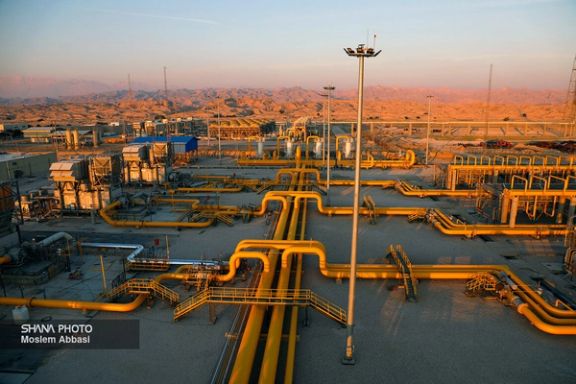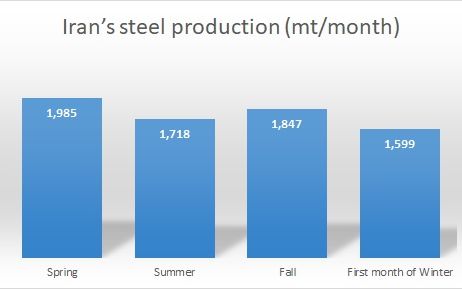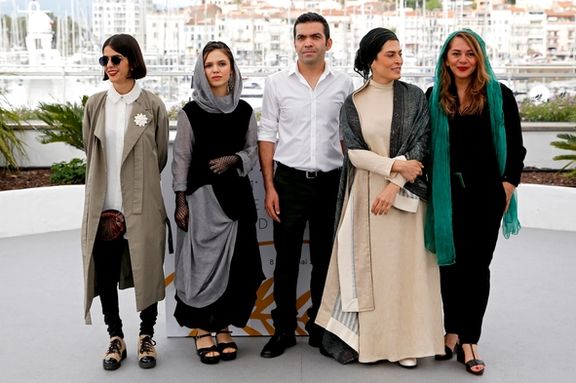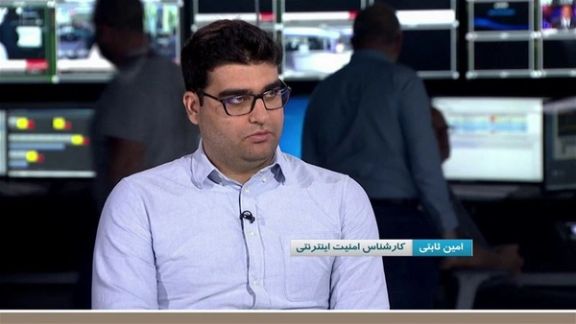PEN America Denounces Imprisonment Of Iranian Writer, Dissident

PEN America has issued a strong condemnation following the sentencing of Sepideh Rashno, a young Iranian writer, poet, and outspoken critic of Iran’s mandatory hijab law.

PEN America has issued a strong condemnation following the sentencing of Sepideh Rashno, a young Iranian writer, poet, and outspoken critic of Iran’s mandatory hijab law.
Rashno, who gained attention after a viral video captured her in a scuffle with a government hijab enforcer in 2022, had her sentence of three years and 11 months in Evin prison enforced on Thursday.
“Writers and artists such as Rashno play a pivotal role, not only by calling out injustices and amplifying the public’s desire for change but also by inspiring everyone to dream of a brighter future grounded in human rights and where women can freely make choices about what they wear,” stated Liesl Gerntholtz, PEN/Barbey Freedom to Write Center director at PEN America.
Rashno’s journey through the Iranian legal system has been marked by controversy. Concerns were raised over a televised confession where Rashno appeared with bruises on her face, sparking allegations of coercion. Despite being released on bail in June 2023, Rashno faced a series of charges, including “propaganda” and “encouraging promiscuity,” culminating in her recent sentencing.
Her case is emblematic of the broader struggle against forced hijab in Iran, a movement catalyzed by the death of Mahsa Amini in 2022. The opposition to mandatory hijab has become a symbol of the Woman, Life, Freedom protests.
Iran’s crackdown on writers is highlighted by PEN America’s Freedom To Write Index, which reported at least 57 Iranian writers arrested in 2022, making Iran the second-highest jailer of writers globally, following China. Furthermore, Iran leads in the incarceration of female writers.
PEN America said it continues to advocate for Rashno’s release and urges the Iranian government to respect freedom of expression and human rights.

Less than two weeks before elections in Iran, 35 of the 88 members have decided not to run for the Assembly of Experts, which is tasked to select the next Supreme Leader.
Lotfollah Dejakam, the Friday prayers Imam of Shiraz has said that the 35 men have realized that they are too old for the Assembly's membership and that they have decided to leave the task to younger clerics.
The AoE has always been a predominantly elder's assembly and photos from the previous and current rounds of the assembly show elderly clerics dozing off during meetings.
Although in the Iranian press the Majles (parliament) elections is in the spotlight, the Assembly of experts election which will be held on the same date, March 1, is the one which is more important as its results affect the fate of succession and post-Khamenei Iran.
On Wednesday, Mohammad Emami Kashani, a 92-year-old senior cleric of the Assembly was said to have been disqualified from running. But reports on Thursday said that Emami Kashani has withdrawn his candidacy because of his medical conditions.

Earlier, Ahmad Jannati, the oldest member of the Assembly at 97 declared his withdrawal from the competition although he still retains his extremely significant post as the Secretary of election watchdog Guardian Council.
Mostafa Faghihi, the editor of centrist Entekhab news website had said that Jannati and others' withdrawal from the Assembly of Experts elections is part of a possible project to pave the way for President Ebrahim Raisi's chairmanship at the new round of the Assembly.
Other observers have also said the same about the withdrawal of dozens of senior clerics from the competition, stating that they would not want to have a relatively younger and definitely less educated cleric as their superior at the Assembly.
Still others believe the dynamics is being furthered by Supreme Leader Ali Khamenei who wants to be in control of the assembly's leadership. He is also said to prefer to have Raisi as the Chairman of the Assembly so that Raisi could become the next supreme leader or play a key part in naming Khamenei's son, Mojtaba as the successor.
According to a report published by Khabar Online website, hardline clerics in Tehran and Qom have reached an agreement about the list of 11 candidates for Tehran. The clerics in Qom and Tehran gave a list of 16 candidates each, but 5 of the candidates in each list are not on the other group's list. Still this partial agreement among conservatives is interesting as they have not been able to react to a consensus over their lists in the previous three rounds of the Assembly election.
All the 11 candidates shared by Tehran and Qom clerics are middle-aged mullahs previously trusted by Khamenei. They include former Intelligence Minister Ghorban Ali Dorri Najafabadi, Seminary Dean Alireza E'rafi, and Islamic Propaganda Office Chairman Mahmoud Mohammadi Araghi.
The five candidates exclusive to Tehran clerics' list are led by former hardliner prosecutor Ali Razini, but all the five on the Qom clerics' list are less known and relatively younger clerics.
Critics in Iran say that now, even without an election on March 1, the ideal scene is set for Khamenei's favorite clerics to enter the next Assembly of Experts under Raisi’s chairmanship without any challenge when the time comes later this summer.
In the meantime, to save Raisi the embarrassment of being the only candidate in South Khorasan for the region's only seat at the Assembly, the Guardian Council endorsed a hitherto unknown cleric out of the blue to be the second candidate from the remote constituency. However, everyone in Iran knows how the rest of the process works to ensure that Raisi wins the competition if there is a competition at all. This process is what Iranian electioneers call engineering; something in between election rigging and grafting.

Iran’s insistence on gas exports despite the huge deficit in production and growing domestic demand that has severely damaged the country’s industrial sector.
Plunging electricity deliveries in warm months and gas in the cold season to major industrial sectors, including petrochemicals, cement, and steel, has widened their idle capacity.
The energy value (heat of combustion) of one cubic meter of natural gas is approximately equal to one liter of mazut or diesel. Despite the Iranian government gaining $4.5 billion from gas exports during the last fiscal year, it had to consume an additional 18 billion liters of diesel and mazut domestically, worth over $9 billion.
Amin Ebrahimi, the vice president of the Iran Steel Manufacturers Association, told the ILNA news website in Tehran that the government has cut gas deliveries to this sector by 30 to 50 percent since November 2023. According to him, the country’s nominal iron and steel production capacity is 46 million metric tons per year (mt/yr), but the actual production volume hardly reaches 33 mt/y due to the energy deficit.
Steel exports rank second after petrochemicals in terms of the country’s non-oil export revenues. According to the Iran Steel Manufacturers Association’s statistics, the country’s steel production declined last summer due to electricity deficits and plunged in January 2024 due to severe gas deficits.
The country’s steel products export value also declined by 5.5 percent to $6.2 billion in the first ten months of the current fiscal year, which started on March 22, 2023. Ebrahimi did not elaborate on how much gas is being delivered to the Iranian steel sector now, but according to a report prepared by the National Iranian Gas Company (NIGC) and seen by Iran International, the average gas deliveries to this sector were 39 million cubic meters per day (mcm/d) last spring.
According to Iran Steel Manufacturers Association’s statistics, the country’s steel production has declined in last summer due to electricity deficit and plunged in January 2024 due to severe gas deficit.

Industrial sector’s gas demand
According to another report prepared by National Petrochemical Company, seen by Iran International, the country produced only 69.7 million tons of petrochemicals during last fiscal year, while this sector’s nominal capacity is 91.5 million tons. In other words, about 25 percent of the capacity of petrochemical plants was idle, mostly due to gas shortages.
In a related context, Mehdi Mahdavi Abhari, the Secretary-General of the Petrochemical Employers Association, announced recently that Iran lost $800 million in petrochemical exports due to gas supply shortages last year. The National Gas Company’s report shows about 70 mcm/d of gas was delivered to petrochemicals last spring, but the current volume is unclear.
However, Saeed Aghli, the head of dispatching operations at the NIGC, said last week that the major industrial sectors (petrochemicals, steel, and cement) are supplied with 78 mcm/d of gas. The NIGC’s report, seen by Iran International, indicates that the figure was 150 mcm/d last spring. In simple terms, NIGC has declined gas deliveries to the major industrial sectors by 48% to compensate for gas deficits in housing, public, business, small industries, and agriculture sectors, where the demand rose from 225 mcm/d in spring to 646 mcm/d last week.
Petrochemicals share 7.5% of Iran’s GDP and 25% of its non-oil exports. Another sector severely affected by gas shortages is electricity generation, where 256 mcm/d of gas was utilized last spring, but the volume plunged to 120 mcm/d last week. Iran uses a huge amount of very dirty mazut fuel as well as diesel to compensate for gas shortages in power plants and industrial sectors during winters. Oil ministry statistics show the country’s daily mazut and diesel consumption increased by 115% and 45% to 43,000 metric tons and 110,000 metric tons, respectively, during the last four years due to increasing gas deficits. Iran faces a 250-300 mcm/d gas shortage in winters, but Arash Najafi, the chairman of the Energy Commission of the Iran Chamber of Commerce, said on February 13 that the deficit volume is expected to double in the coming years.
Petrochemicals account for 7.5% of Iran’s GDP and 25% of its non-oil exports.

Gas export
Another sector severely affected by gas shortages is electricity generation, where 256 mcm/d of gas was utilized last spring, but the volume plunged to 120 mcm/d last week. Iran resorts to a significant amount of very dirty mazut fuel as well as diesel to compensate for gas shortages in power plants and industrial sectors during winters. Oil ministry statistics indicate that the country’s daily mazut and diesel consumption increased by 115 percent and 45 percent to 43,000 metric tons and 110,000 metric tons, respectively, during the last four years due to increasing gas deficits. Iran faces a 250-300 mcm/d gas shortage in winters, but Arash Najafi, the chairman of the Energy Commission of the Iran Chamber of Commerce, stated on February 13 that the deficit volume is expected to double in the coming years.


Iran’s culture minister has said that Iranian movies should have a screening permit from the Islamic Republic’s authorities to be allowed to compete in foreign festivals.
Mohammad Mehdi Esmaili said Friday that the Ministry of Culture and Islamic Guidance will not exempt the movies bound for foreign screenings from its regulations.
Iranian movies, like music and books, are subject to draconian and lengthy review and censorship procedures by the Islamic government.
“We support any endeavor that contributes to the realization of the ideals of the Islamic Revolution, and there is no support for any production that seeks to be indifferent to the ideals of the Islamic Revolution,” he said. In an attempt to appear less authoritarian, he clarified, "This should not be construed as a crackdown on the intellectual sphere of the country."
Earlier in the week, Esmaili also said that promotion of music and musical works is not on the agenda of the Islamic Republic.
The culture minister also dismissed the notion that Iranians have become less religious over time, claiming that based on the latest survey conducted by the Ministry of Culture, Iran has demonstrated a significantly stronger adherence to religious norms this year compared to the pre-revolution era, when religious practice was free and not mandated by the ruling authority.
The Fajr Film Festival, once the Islamic Republic's most prominent annual cultural events, caused embarrassment for the regime this year. Iran's best-known filmmakers refused to attend the gala and critics criticized the organizers for their poor programming. The festival has become a political tool in the hands of hardliners to punish independent filmmakers and promote their loyalists.
Late in January, prominent Iranian filmmaker Asghar Farhadi said he will not produce any films in Iran until the ban on showing women without headscarves is lifted, as people demand.

Iran’s Hajj and Pilgrimage Organization announced the official cancellation of the Umrah pilgrimage, with refunds for over 30,000 Iranians already registered being processed.
The Umrah, an Islamic pilgrimage to the holiest Muslim city Mecca in Saudi Arabia, can be undertaken at any time of the year, in contrast to the Haj pilgrimage, which has specific dates according to the Islamic lunar calendar. The first group of Iranian pilgrims was scheduled to embark on Umrah in early January after about seven years of diplomatic estrangement between Tehran and Riyadh.
The cancellation of the Umrah pilgrimage was attributed to a "technical disagreement" regarding Iranian flight permits for entry into Saudi Arabia.
Hesam Ghorbanali, the spokesperson for Iran’s flag carrier airline Iran Air (Homa), said at the time that due to the lack of the required permit, the aircraft of the Islamic Republic was unable to travel to Saudi Arabia, claiming that the problem would be resolved within a few days.
Now after about a month and a half, Haj and Pilgrimage Organization announced that all registration fees will be refunded.
Since the suspension of Umrah in 2015 and the emergence of disagreements between Tehran and Riyadh, approximately six million Iranians have been awaiting the resumption of Umrah. The minister of culture had previously promised that before the summer of 2024, around 400,000 people would undertake the Umrah pilgrimage.
The relations between the Islamic Republic and Saudi Arabia have been strained over the years, with heightened tensions due to Iran's support for Shia paramilitary groups, notably in Yemen.
However, after a seven-year diplomatic hiatus, Tehran and Riyadh reached an agreement in February 2023 of the previous year to resume diplomatic relations. The agreement, mediated by China paved the way for a subsequent trip by Ebrahim Raisi, the President of the Islamic Republic, to Saudi Arabia.

A cybersecurity specialist asserts that the Iranian regime will continue facing increasing cyberattacks due to “structural defects” in their cyber defense systems.
Amin Sabeti told Iran International that digital security cannot rely solely on slogans and rhetoric, predicting further large-scale cyberattacks against Iranian targets.
The latest episode in a long series of cyberattacks in the past few years, was a major of hack of parliament’s servers that brought to light troves of documents, including the real income of lawmakers and US sanctions evasions.
He further stated that many projects aimed at developing what the regime terms “domestic services” have failed due to their reliance on corrupt connections and nepotism rather than meritocracy and expertise.
According to Sabeti, both public and private organizations in Iran do not take information security audits seriously. He emphasized that severing ties with the global internet cannot guarantee cybersecurity, highlighting the inefficacy of the regime’s costly “national internet” project.

Meanwhile, an Iranian lawmaker acknowledged the country's vulnerability to cyberattacks due to structural weaknesses in its cyberspace control. Shahriar Heydari, deputy chairman of the National Security and Foreign Policy Commission of the Iranian parliament, stated that the National Organization for Passive Defense and the Intelligence Ministry should be held accountable for recent cyberattacks against Iran.
“Cyberspace is a war of information. Every country needs to secure its systems against hacking and data theft,” Heydari stressed.
His remarks came two days after a cyberattack targeted over 600 Iranian government servers, including the Khaneh Mellat News Agency, the Iranian parliament’s media arm. Hacktivist group Uprising till Overthrow, closely linked with the Albania-based opposition Mujahideen-e Khalq (MEK) organization, claimed responsibility for the attack.
Heydari accused MEK of attempting to defame the Iranian parliament ahead of the upcoming parliamentary and Assembly of Experts elections on March 1. Documents leaked following the hack uncovered a wide range of Tehran’s strategies to circumvent US sanctions. The documents revealed the parliament's coordination with designated Iranian entities and individuals to facilitate their trade activities and conceal their identities and connections from international regulatory bodies.
Some other documents were also released by a group calling itself ‘Uprising till Overthrow’, including those related to the high salaries of Iranian lawmakers. Lawmakers have incomes that are at least 20 times more than what an ordinary government employee earns.
In December, a cyberattack paralyzed gas stations across Iran. The hacking group ‘Gonjeshk-e-Darande’ or Predatory Sparrow announced the attack on X, claiming that they took out “a majority of the gas pumps throughout Iran.” Tehran accuses the group of having links to Israel.
According to Heydari, the head of Iran’sPassive Defense Organization was invited to a session of the parliament’s National Security Commission following the December cyberattack.
“Instead of being accountable, he just justified and described the incident. Our problem is that if we invite an organization, the first thing they do is to justify and provide performance statistics, instead of discussing the main issue,” the lawmaker added.
However, the Iranian regime has been involved in sustained cyber operations against different targets around the world, to gain information or disrupt government operations and private companies.
Microsoft disclosed on Wednesday that state-backed hackers from Iran, Russia and China have been leveraging tools developed by Microsoft-backed OpenAI to enhance their cyber espionage capabilities.
Earlier in November, Microsoft’s Threat Analysis Center (MTAC) reported that Iran has intensified its cyberattacks and influence operations since 2020, targeting Israel and other countries. The report also warned that Iran, Russia and China are likely to plan to influence the upcoming elections in the United States and other countries in 2024.
In December 2023, Iran-linked hackers targeted a water facility in the rural area of County Mayo in Ireland, leaving the residents without water for two days. The attack was carried out by pro-Iran Cyber Av3ngers group which claimed that the facility was attacked because it used an Israeli-made piece of equipment.
Iran International revealed last month that Iran’s Intelligence Ministry conductscyberattacks against Israeli civilian targets via a cover tech company. The cyber group ‘Black Shadow’ (“Saye-ye Siah” in Persian), which targeted Ziv Medical Center in the northern Israeli city of Safed in November is in fact a tech company in Iran.